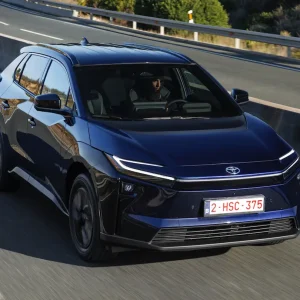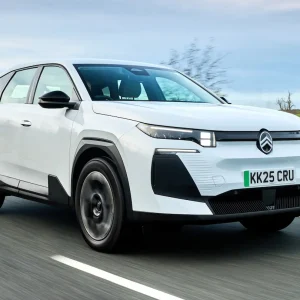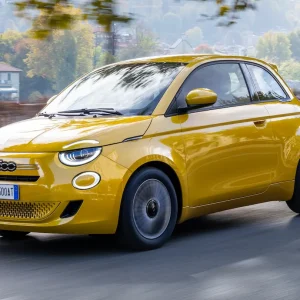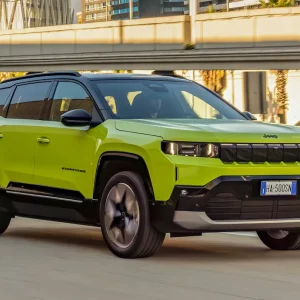If you’re toying with the prospect of running a premium electric vehicle as your next set of company wheels, then the Tesla Model S has to be on your list of contenders.
And when we say premium, we mean premium. Tesla’s flagship S P100D model may be one of the fastest-accelerating production cars money can buy, but
at £123,050 its supercar-shaming abilities are severely diminished by its supercar price tag.
Thankfully, there is a more affordable option. Priced from £71,050, or £67,550 if the government electric car grant is deducted, the S 75D is over fifty grand cheaper than its bigger-batteried sibling.
So what’s the catch? Well, along with a drop in performance – instead of a sensory -assaulting warp drive you’ll have to make do with a merely jaw-dropping, 4.2-second 0-60mph acceleration time – you also lose a chunk of range, because while the S P100D is rated at 381 miles between charges, the S 75D is capable of only 304.

Jumping in a Tesla for the first time you are entitled to feel a little overawed, as it’s a bit like entering a plush, if rather minimalistic, spaceship. The main centre of focus is the dominant, slightly intimidating, 17in infotainment screen, which looks like a jumbo iPad and features more exotic menus than a Heston Blumenthal bistro.
Besides this, there are other futuristic touches, like the way you can directly control the sunroof with a simple swiping action or the fact that the car is connected directly to the internet, so it uses Google Maps as sat-nav – meaning it’s a far more sophisticated interface than most manufacturer mapping systems.
The central screen is also informed by eight surround cameras to provide a
360-degree view of what’s going on around the car at up to 250m, while 12 ultrasonic sensors complement this vision, allowing for the detection of both hard and
soft objects.
Forward-facing radar provides additional data about the outside world and this is able to see through heavy rain, fog, dust and even the car ahead. What’s more, all the car’s software updates happen automatically, too, so notifications of new features appear straightaway, just like with your mobile.
Download the Tesla app on your phone and you can control things like heating and charging remotely. It also gives additional notifications about useful things such as whether the car is locked, where you parked it and if charging has been disrupted.

Of course, one of the main benefits of Tesla ownership is that you can stop off at any Tesla supercharger and charge to 80% capacity in just 45 minutes – the downside being there are only 35 of them in the country.
Once you become familiar with your surroundings, like most automatic electric cars, the Tesla is simple to drive. You use buttons to choose forward or reverse motion, or a park mode, and that’s about it.
Mid-range overtaking power is simply staggering. As with any electric car though, it pays not to get too carried away with the addictive performance or you will severely compromise your range.
Despite being a very heavy car – batteries tend to be extremely dense – the majority of the weight is low slung, so the handling is surprisingly secure with loads of grip and little roll in the corners.
It’s still a big old thing to navigate around tiny city streets, however, and no amount of screen displays can compensate for the huge pillars and small rear window, which combine to create big blind spots.
Overall, the 75D’s cabin is seriously quiet, as is to be expected in an electric car. Tyre roar and wind whistle on motorways is more noticeable than in other cars, but that’s probably because of the lack of engine noise present.
Without an internal combustion engine taking up space, the Model S benefits from a cavernous 30ft3 of boot capacity (the company doesn’t state a metric minimum, but it’s around 750 litres by the widely used VDA method). You can also get the 75D with under-floor storage, or seats, that flip out allowing small children to sit in the boot. It offers a spacious cabin, but the sloping roof does mean adults over 6ft will struggle with headspace in the middle row. All those under-floor batteries do tend to force the floor and sitting positions quite high. There are also no door bins anywhere.
The 75D starts at just over £70,000, but when calculating the price of any electric vehicle it’s important to compare not just the P11D, but also the effective cost of ownership. Depending on your lifestyle, factoring in typical petrol savings as well as available tax incentives, the effective cost of owning a Model S 75D can make it a compelling option.
Tesla vehicles also require only basic regular maintenance; for example, there are no oil changes, fuel filter or spark plug replacements, and its four-year/50,000-mile warranty and eight-year/infinite mile battery and drive unit warranty come standard with this model.
The Model S is practical, spacious, good to drive, and delivers an encouraging real-world cruising range. As rivals from established manufacturers are currently launching, the real challenge for the brand starts now.
Tesla Model S 5Dr Dual Motor Electric 328 75D Auto 4WDE
P11D £74,450
On sale August 2018
Residual value 48.8%
Depreciation £38,100
Fuel £1,068
Service, maintenance and repair £4,271
Cost per mile 72.4p
Range 304 miles
CO2 (BIK band) 0g/km (7%)
BIK 20/40% a month £87/£174
Boot space 850 litres (estimate)
Engine size/power 72.5kWh/328hp





